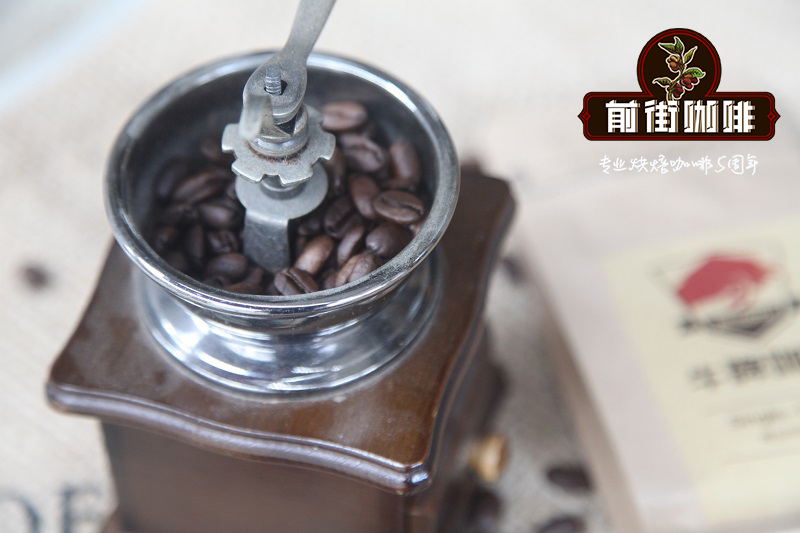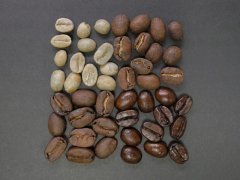The purpose of baking is to explore the most suitable baking degree | which is better, light baking or deep baking?

Professional coffee knowledge exchange more coffee bean information please follow the coffee workshop (Wechat official account cafe_style)
How do coffee beans change from raw beans to cooked beans? Why does coffee have so many flavors? Let's take a look at the role of roasting in coffee from seed to cup.
The purpose of baking is to explore the most suitable "baking degree".
"things that must be baked before eating include cocoa beans, peanuts, almonds, ginkgo biloba, soybeans and so on. Among them, the baking of coffee is very special. Sometimes it's even fried until it's dark. The temperature is 190-250 ℃. Nothing can be fried so hot except coffee. Nuts are only about 150 ℃. In fact, if you don't fry at high temperature, the coffee will not taste good. Under the influence of Arabs, the deep-baked fertile world was discovered by Islamists. " Mr. Danbu illustrates the particularity of coffee roasting in this way.
As mentioned before, the fruit of coffee cherry is sweet, but the coffee bean as a seed is very boring, and the seed itself is not edible whether fried or barbecued. It may be an exaggeration to say that it is inedible. Although it is not inedible, it is by no means delicious. If baked beans, sprinkled with sugar or made into milk jelly, it will become very delicious. However, if eaten raw, it will be prohibitive.
However, once baked, the ingredients in raw beans will change chemically, giving off an indescribable aroma. Then we learned from our ancestors how to crush and extract the essence of baked beans.
Light roasting and deep roasting produce completely different coffee. Light baking and deep baking, no one is good or bad! It all depends on what kind of coffee you want!
The baking process is divided into three steps. First, dehydrate the beans and remove the natural moisture.
All coffee beans contain 9.5% to 12% moisture, and some of the moisture must be removed before we can start other baking reactions. As soon as the moisture decreases, the beans begin to change color.
The second stage, called Maillard reaction, is a process of browning and developing aroma and flavor. The process of reducing sugars and amino acids produces hundreds of different aromas and colors.
In the final stage of browning, the beans begin to swell and burst.
This is called "an explosion", and then enters the third stage, which is also the final stage of development. Beans continue to burst as they are baked, and the exothermic reaction will affect the density and depth of baking.
Shape
Shallow baking stops heating after an explosion, so retain more moisture. As a result, beans are denser, look closer to brown than reddish brown, and feel smooth and dry. Coffee is lighter in color and lighter in taste on the tongue. Imagine, it's more like toast than roast.
In contrast, dark-roasted coffee beans are nearly black in color and show a smooth touch. After coming out of the cup, the grease luster is obvious, which is thicker and more full-bodied than shallow baked beans.
Flavor
Light roasted coffee tends to produce more delicate and complex aromas.
Deep-roasted coffee is more full-bodied, less sour, relatively bitter, with chocolate flavors. If you like heavy Cabernet or heavy barrel aged beer, deep baking is exactly what you want.
Freshness
Whether light or deep, try to buy coffee beans that are baked within two weeks. Because after that, the coffee will gradually lose its flavor.
Caffeine
When it comes to caffeine content, the truth is that extraction methods have a greater impact on caffeine than baking methods.
For example, deep-roasted coffee contains relatively little natural caffeine. However, deep-roasted coffee is less dense than light-roasted coffee, so when you make coffee, you may use more beans. Then the difference in caffeine content is out of the question.
To tell you the truth, Qianjie Coffee believes that whether deep-roasted or light-roasted, radish and green vegetables really have their own preferences, some people like the mellow taste of deep-roasted coffee and strong chocolate, while others like the flower and fruit aroma and unique sour taste of light-roasted coffee. so what exactly is the baking degree? Qianjie Coffee thinks it all depends on the person!
END
Important Notice :
前街咖啡 FrontStreet Coffee has moved to new addredd:
FrontStreet Coffee Address: 315,Donghua East Road,GuangZhou
Tel:020 38364473
- Prev

What does commercial coffee bean mean? What good commercial coffee beans do you recommend?
Professional coffee knowledge exchange more coffee bean information please follow the coffee workshop (Wechat official account cafe_style) first commercial coffee beans, or first boutique coffee beans? We can't find out about this, but since the concept of fine coffee has been successfully promoted, coffee raw bean merchants and roasters all over the world have begun to promote fine coffee, and they can't help but call commercial coffee worthless.
- Next

What kind of coffee beans are suitable for beginners? How to buy coffee beans for the first time?
Professional coffee knowledge exchange more coffee bean information Please follow the coffee workshop (Wechat official account cafe_style) I believe that many coffee rookies want to get out of the instant, but when they see the complicated instructions of all kinds of coffee beans and coffee powder, they will inevitably get confused. The consequence of buying coffee blindly is: what kind of bad coffee is this? It tastes terrible! So what is the best coffee bean? That's for sure
Related
- Beginners will see the "Coffee pull flower" guide!
- What is the difference between ice blog purified milk and ordinary milk coffee?
- Why is the Philippines the largest producer of crops in Liberia?
- For coffee extraction, should the fine powder be retained?
- How does extracted espresso fill pressed powder? How much strength does it take to press the powder?
- How to make jasmine cold extract coffee? Is the jasmine + latte good?
- Will this little toy really make the coffee taste better? How does Lily Drip affect coffee extraction?
- Will the action of slapping the filter cup also affect coffee extraction?
- What's the difference between powder-to-water ratio and powder-to-liquid ratio?
- What is the Ethiopian local species? What does it have to do with Heirloom native species?

